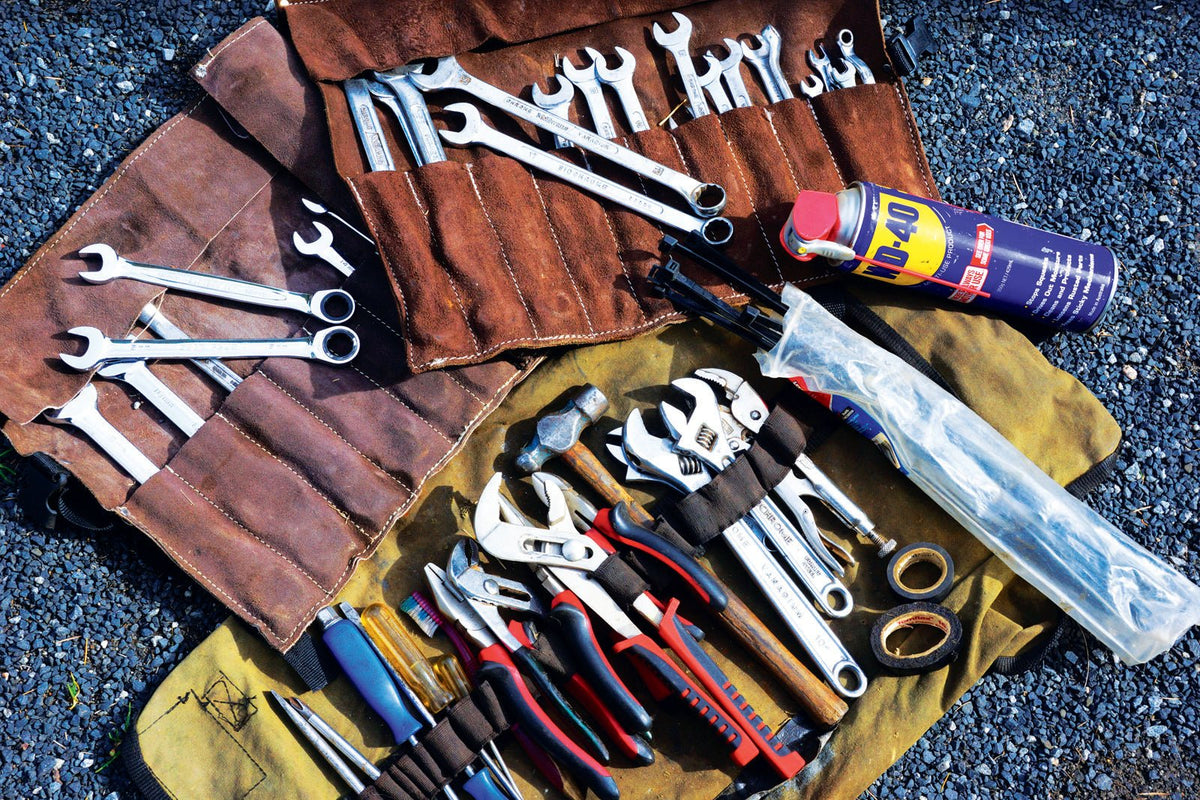
A Toolbox for Travellers
|
|
Time to read 3 min
|
|
Time to read 3 min
The outback touring season is about to start, so now is a good time to review the spare parts and tools you carry on those trips out bush.
I have a couple of friends who travel with such a great toolbox that I hardly need to carry anything. They rarely need the stuff themselves, but have helped out dozens of less equipped travellers while wandering the back blocks of this country.
But do you really need to carry an abundance of rattling metal and obscure components? I’ve got to say, I’ve downsized my kit a little since my early days of outback travel, as vehicles have become more reliable and I maintain my vehicles better.
Besides, even with all the tools, a major breakdown in the scrub is basically hopeless, especially if it is a major computer issue. In that case, you’ll need a recovery of some sorts – hopefully from a travelling companion!
I remember a trip in the 1980s with the late Russell Guest, who established the still very successful and highly regarded Guest 4WD in the Melbourne suburb of Alphington. One of our convoy blew a harmonic balancer when they were at full noise trying to cross a dune on the CSR. Such was the devastation under the bonnet from the flying pieces of balancer that the water pump, radiator, alternator, air conditioner, associated hoses, electrical cables, and vehicle battery were all damaged or destroyed. I’ll always remember Russell’s words as he slammed the bonnet shut: “Well, that’s stuffed!” he said, in a classic understatement. That 60 Series ended up on a very long snatch strap as we towed it back to civilisation, but that is another story.
Still, a bit of knowledge and a modicum of equipment can get you out of a lot of trouble. So too can keeping your most often used tools in tool rolls, which makes them easy to pack and easy to get to.
Aside from the absolute kit essentials, there are a few other important items we always consider carrying, depending on the circumstances.
On the bigger, longer trips or those involving very remote cross-country jaunts, I carry an extensive tyre repair kit which includes tyre levers, a bead breaker and more.
As well, I carry some extra gear for 12 volt welding, using the set of jumper leads that are always in the vehicle and the two big batteries under the bonnet. A piece of welder’s glass for eye protection, set in a piece of cardboard, makes a handy eye and face mask, while my welding hand-piece and lead from the 240 volt welder at home completes the emergency kit. Some people will recommend three 12 volt batteries connected in series, but I’ve always found two to be more than enough.
With all the electrical outlets and accessories we tend to carry these days as well as towing a trailer, electrical faults are one of the most common problems. A good multimeter ($30 or so from Bunnings) is essential for analysing electrical issues when in the scrub, while a good soldering iron is paramount for any wiring repairs; we like the butane fuelled ones for $30 to $50.
With more modern vehicles, a ‘scan tool’ of some sort is worth investing in, for troubleshooting vehicle computer generated codes and to monitor many of the engine parameters. You can start with a Scan Guage (priced from $180) or a bluetooth wireless scanner, which will talk to your smartphone (these you can find on the web for less than $30). Or you can get a dedicated code reader/scanner, such as those available from Foxwell for $180 or so. There are variations in what units can monitor and do; those that tell you why the ‘engine check light’ is on and can then switch it off are a great idea, I reckon!
Finally, we make sure to carry a repair manual for our vehicle. Even if you haven’t got much, or any, vehicle understanding yourself, somebody with more mechanical knowledge may be able to help, if they know where to start with your vehicle.
ITEMS TO START YOUR KIT